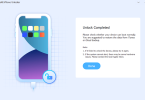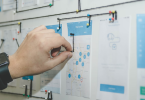Mobile app development involves building software for smartphones and other hand-held devices. Mobile app development stems from traditional software development, like web app development. Mobile apps are typically built to use a device’s unique characteristics. A game app may use the iPhone’s accelerometer, or a health app may use a smartwatch’s temperature sensor.
Apple’s iOS and Google’s Android are the most popular smartphone systems. Apple phones and tablets come with a web browser and the App Store. Android smartphones come preinstalled with comparable applications, and you can download more from Google Play. If you are a mobile app development company then this article is one for you and you need to keep an eye on your process.
More from us: Renewable energy development services
Contents
Mobile App Development Process
Step-by-step app creation is easy. Follow this formula to construct apps:
Refine ->strategize
Before developing software, brainstorm concepts. Some may have a rudimentary idea. Others may start over.
Start by asking yourself these questions:
- What’s your app’s goal?
- Your app’s aims
- How would your app help customers?
- Your app’s features
- What’s your budget?
- What’s the app’s plan? (Team, agency, app developer, etc.)
During brainstorming, it’s easy to overthink. Stick to the app’s essential functionalities. Unnecessary add-ons or “nice-to-haves” should be avoided.
Market Analysis
After finalizing your idea, research comparable apps. A novel notion with no competition is unusual.
- Competitors?
- Who’s your audience?
- What’s your competitive differentiation strategy?
- What’s the best app platform?
- What are your app marketing plans?
You can’t skip or speed market research. You don’t want to create a concept just to find no market for it. Getting this worked properly before building can save you a tonne of money.
Design UX
Mobile app design is also important. Consider the app’s design. Sketch out the app’s functionality and generate wireframes.
Prioritize user experience. You must provide a smooth user interface.
- Storyboard or map screen connections.
- Consider how your app differs from a mobile website (app development and web development are not the same).
- Prioritize user experience.
Before building a fully-functional app, construct prototypes based on your wireframes. Create an MVP here (minimum viable product). This is a bare-bones programme that accomplishes its aim.
Development
Create the app. This encompasses back-end, APIs, and front-end development. Do this:
- Pick a development approach.
- Build a team.
- Start a project.
- Set goals and milestones.
- Be flexible and expect adjustments.
Depending on your development technique, you may require distinct iOS and Android apps. You may also utilize cross-platform development tools to create a single software for both OSes. Everyone’s method is different. Single developers may build apps in a month. Multiple developers may need six months or a year.
App type and feature complexity affect app development timeframe and expense. A basic app should be easy and cheap to create. Complicated software that needs authentication servers, GPS, real-time user communication, and other features will take longer.
More from us: What Is a VPN? Your Personal Guide
Testing
Your app must operate before going live. App testing helps you uncover bugs, flaws, and other issues before releasing it to clients.
- QAs should test your app during development.
- Both platforms must be tested.
- App on many devices (smartphones, tablets, etc.).
- Test and improve with actual users.
- Unperfect apps exist. Your testing should result in a crash-free program that people can enjoy.
You may update and re-release your app. Trying to perfect the software during testing might prevent its release. Don’t be too harsh on yourself; just do your best.






